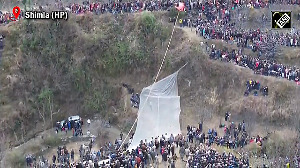Like everything else in life, stock prices are driven by supply and demand. Supply is synonymous with bears and selling. Demand is synonymous with bulls and buying.
As demand increases, prices advance and when supply increases, prices decline. When supply and demand are equal, bulls and bears slug it out for control.
Where is support established?
As the price declines, buyers become more inclined to buy and sellers less inclined to sell. A point where demand overcomes supply and prevents the price from falling becomes a support.
Human behaviour is responsible for the existence of supports and resistance.
Many investors who have zeroed in on a particular stock may not commit their resources as prices are falling. Once the price starts rising, they rue the fact that they did not buy it when it was low and vow to buy it if prices come back to those levels.
If buying demand overcomes supply at those levels, prices will rise from that level again, reinforcing the psychology. The significance of the support level increases the more times the price bounces back from that level.
Support does not always hold and a break below support signals that the supply from bears has won over the demand form bulls. A decline below support indicates a new willingness to sell and a lack of willingness to buy.
Once support is broken, another support level will have to be established at a lower level. Sometimes price movements can be volatile and an intra-day dip below support is not considered a breach of support, which we call a 'whipsaw.'
What is resistance?
As the price advances, sellers become more inclined to sell and buyers are wary of committing resources at high levels. At a point where supply exceeds demand and prices stop rising, further movement is resisted.
Resistance is the price level at which selling is thought to be strong enough to prevent the price from rising further.
As the price falls from such a resistance point, investors who were hoping for a further rise now realise they have missed on selling the stock. And when prices rise to this resistance level, they remember to sell this time, which creates pressure from all such investors who were left holding the baby earlier.
This makes the resistance point a tough nut to crack.
The significance of the resistance level increases with the number of times the price reverses from that level.
Just like support, resistance does not always hold and a break above resistance signals that the bulls have won out over the bears. A break above resistance shows a new willingness to buy and/or a lack of incentive to sell.
Support equals resistance
Once the price breaks the support and travels lower, it turns into resistance. Similarly, if the price pierces the resistance and goes further up, the resistance level then becomes the support.
A mere intraday violation of the support and resistance levels is not enough. It should close above the resistance or close below the support to qualify as a successful breach.
The previous day's, week's or month's low are common examples of support. Similarly, the previous day's, week's or month's high acts as a resistance.
Round figures like 40, 100, etc also act as general resistances. The issue price of a stock also acts as a support or resistance for IPO listings.
If a stock reaches a support level, it pays to give attention to a sign of increased demand and for a potential reversal, similarly look for signs of extra supply at resistance levels.
If a support or resistance level is broken, it signals the relationship between supply and demand has changed and one can initiate a trade in that direction with that level as a 'stop loss.'
The writer is director and head of research, Anagram Capital.






 © 2025 Rediff.com -
© 2025 Rediff.com -